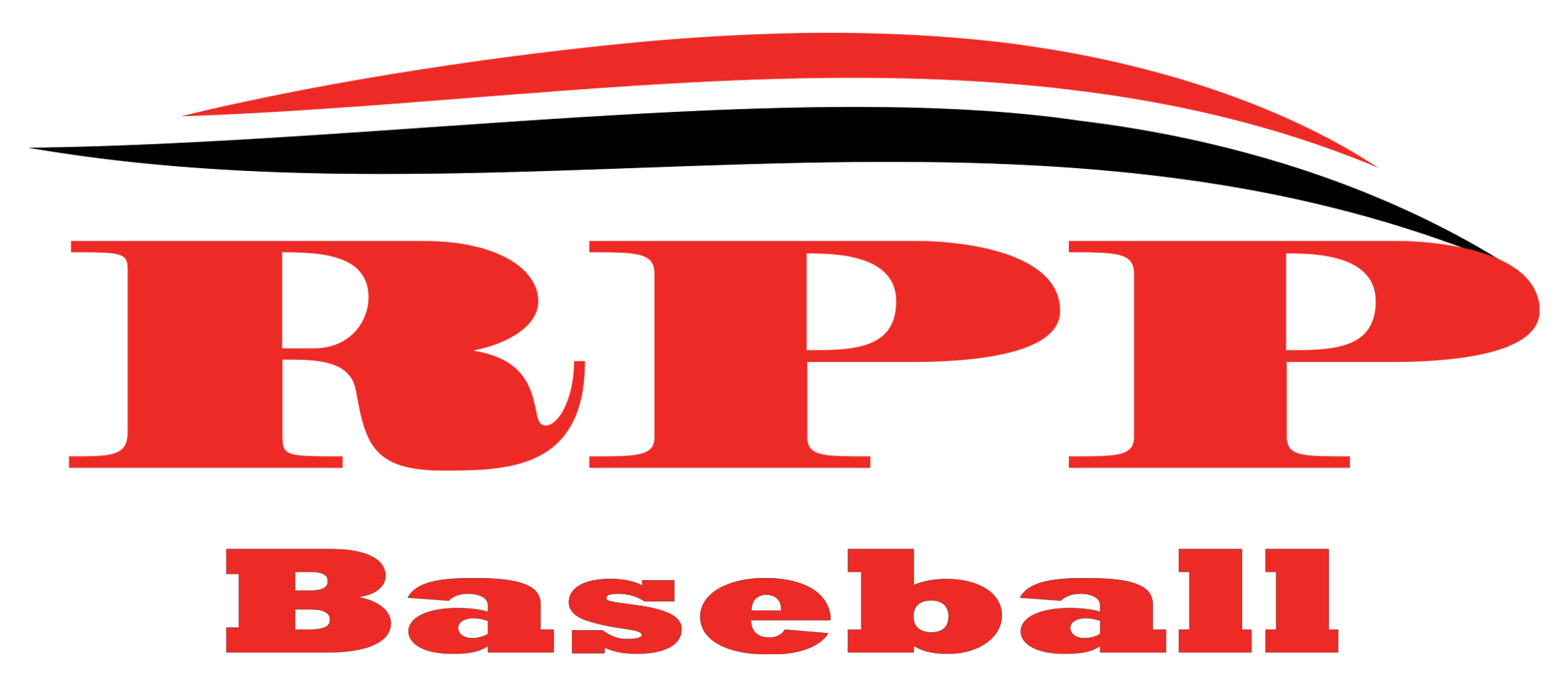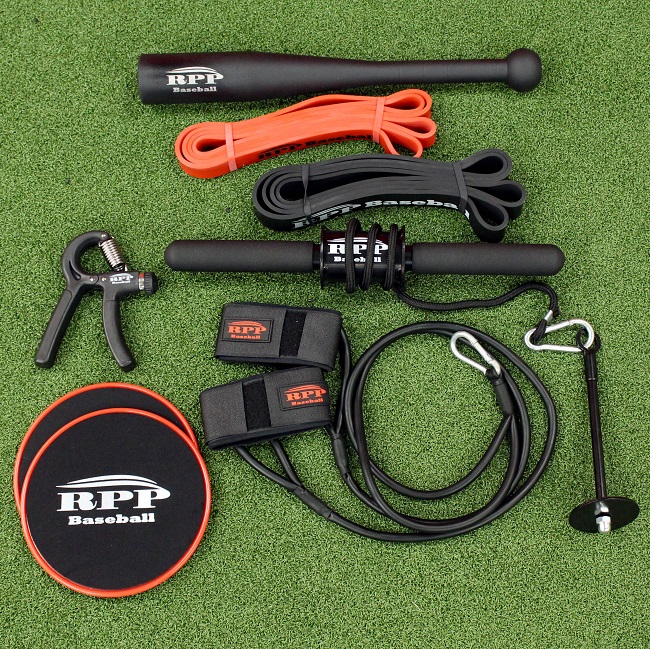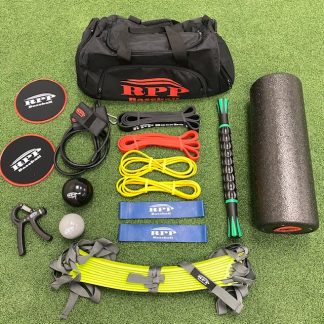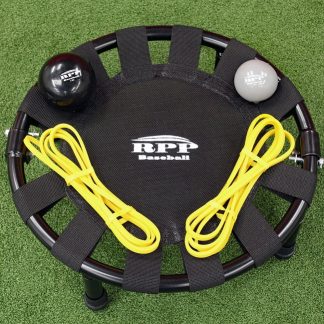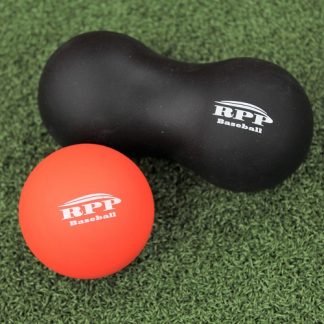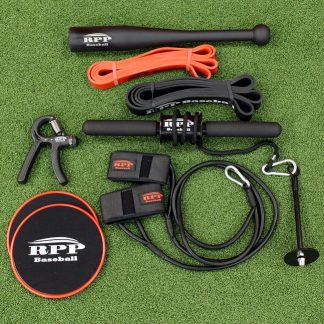Description
The following is a summary of equipment in the UCL Protection Package meant for elbow and forearm exercises for pitchers and baseball players:
- Digital Programs (email and online access w/videos)
- UCL Protection Program
- Equipment
- 1 Activation Band
- 1 Grip Strengthener
- 1 Club Bell Pronator
- 1 Power Band – Heavy (Black)
- 1 Power Band – Medium (Red)
- 1 Set of Sliders (pair)
- 1 Wrist and Forearm Trainer
- Requires plates to serves as weights on the wrist and forearm trainer (5-15 lbs. depending on athlete)
The following article is to summarize how we attempt to help stabilize and protect our pitchers and baseball players’ UCL (also known as the Tommy John ligament) with several elbow and forearm exercises we perform here at RPP.
But before we get into it, let’s go over the current situation. A recent study in The Physician and Sports Medicine showed that 29% of youth baseball players up to the age of 12 reported episodes of shoulder or elbow pain. Another report in the Journal of Arthroscopy noted 31% of pitchers up to the age of 22 have experienced an arm injury as well. Over a third of Tommy John procedures performed are on youth pitchers. Here is a graph showing the rise in Tommy John surgeries performed on youth each year by Dr. James Andrews (American Sports Medical Institute):

With that said, let’s get into it:
-
- Strengthen the Periscapular Muscles
- Strengthen the “Flexor / Pronator” Groups
- Strengthen the Rotator Cuff
- Strengthen the Core Musculature
- Improve Shoulder Mobility
- Controlling Excessive ROM During the Season
By following the above protocol, we can help stabilize the injured elbow and prevent injury recurrence both before the initiation of a progressive throwing program as well as after.
1. Strengthen the Periscapular Muscles
The Periscapular muscles serve to anchor the scapula for its role as the main stabilizer of the shoulder. In addition, they guide the scapula through the requisite degrees of freedom. These muscles include and are associated with the following movements:
-
- Serratus anterior and Pec Minor (protraction)
- Trapezius, Rhomboids, Levator Scapulae (retraction / elevation)

Exercises to help strengthen the periscapular muscles:
Serratus & Pec Minor
(Push-up to Downward Dog – x8)
Trapezius
(1-Arm Band Row – x10 / side)
Rhomboids
(½ Kneeling Rev. Rows – x10)
2. Strengthen the “Flexor / Pronator” Groups
These are some of the muscles that help stabilize and protect the elbow, especially in the “layback” position:
-
- Flexor Digitorum Superficialis
- Flexor Carpi Radialis
- Flexor Carpi Ulnaris
- Pronator Teres
The flexor digitorum superficialis is an extrinsic muscle that allows the four medial fingers of the hand to flex. These fingers include the index, middle, ring, and pinkie fingers.

The flexor carpi radialis muscle is a relatively thin muscle located on the anterior part of the forearm. It performs the function of providing flexion of the wrist and assists in abduction of the hand and wrist.

The flexor carpi ulnaris arises along with the other superficial muscles, from the medial epicondyle of the humerus. These muscles flex the wrist and adduct it (move it laterally in the direction of ulnar).

The pronator teres muscle is located on the palmar side of the forearm, below the elbow. its function is to rotate the forearm palm-down. This is also known as pronation.

Here are a few of the forearm, grip and elbow exercises we perform on non-throwing days to strengthen the flexor/pronator group.
Stretch
(Wrist Flexion / Extension Stretch – x20-30 sec/side)
Strengthening Exercises (1-2 sets ea / 2x per week)
(Wrist and Forearm Trainer – x3/ea way)
(Pronators – x8 reps)
(Pronation/Supination – x10 / side)
(Grip Strengthener – x5, 5 sec holds)
3. Strengthening the Rotator Cuff
When training the cuff musculature, it is important to work on both strength AND firing time of the cuff.

Here are a few great ones.
(Band ER @ 90 degrees – x10)
(Band IR @ 90 degrees – x10)
4. Strengthen the Core Musculature
Extension in the lower back is many times due to a lack of core control. This can cascade into a number of mobility problems up the chain (i.e the shoulder). Such as:
-
- Limited Shoulder Flexion
- Limited upward Rotation
- Elbow Valgus Torque (getting in and out of layback)
Here are a few staples we use with great sucess.
(Bird Dogs w/ Trap Raise – x8 / side)
This one is great for training stability/firing time of the cuff as well.
(Rev. Alligator Walks – 15-20 yds)
5. Improve Shoulder Mobility
A lack of shoulder flexion has been shown to place stress on the medial elbow. Improving shoulder mobility will go a long way in helping to take extra torque /stress off the UCL.
(Band Standing Shoulder Flexion – x8)
(Side Lying Windmill – x8 / side)
6. Controlling Excessive ROM During the Season
Gains in external rotation (ER) happen naturally for pitchers and baseball players from throwing during the season, but excessive gains in ER can create an unstable shoulder, forcing the elbow to have to take up the slack and placing added stress on the UCL. Monitoring throwing volume, as well as participating in a good in-season strength training program complete with shoulder stabilizations during the season, can be a career saver.
